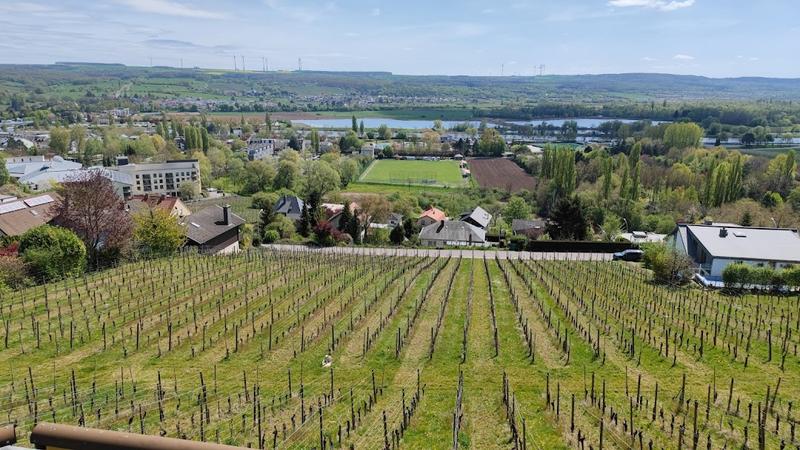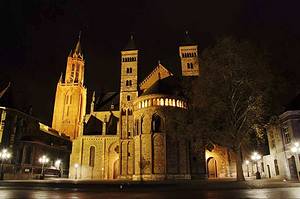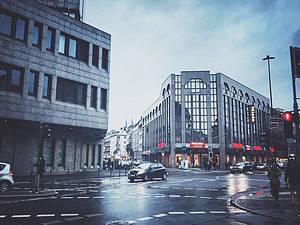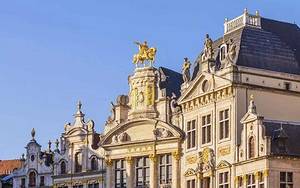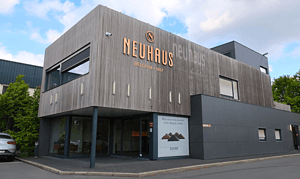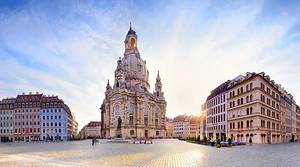Luxembourg 7-Day Tour
7 cities |
12 attraction(s) |
total distance 193
km
 TIPS
TIPS
Day1
Day2
Day3
Day4
Day5
Day6
Day7
Day1: Luxembourg
2 attraction(s) ·
1 km
1
William II Square in the old town of Luxembourg is named after the Dutch King and Grand Duke of Luxembourg, William II. The square features a magnificent bronze statue of William II on horseback mounted on a marble pedestal, attracting many tourists to stop and take pictures. On the east side of the square is the Grand Ducal Palace of Luxembourg and on the south side is the Luxembourg City Hall, which was once the signing place of the Treaty of the European Coal and Steel Community. Normally, the square is very solemn and dignified, but on weekends it turns into a bustling market. Stalls selling flowers, fruits, vegetables, daily necessities, clothing, and more can be seen everywhere, with crowds of people surging. On the west side of the square is the Luxembourg Tourist Information Center, which not only provides tourist information but also regularly hosts cultural activities such as the Luxembourg Summer Jazz Festival and the City Summer Theme Culture Festival. Every weekend morning, it becomes the market of Luxembourg City.
1
km
2
Gothic, Baroque & Renaissance-style Catholic cathedral in a former Jesuit church completed in 1621.
Day2: Luxembourg
2 attraction(s) ·
1 km
1
The Luxembourg Castle, also known as the Bock Fortress, is located in the northeast corner of the old city area of Luxembourg. Its rocky cliff towers are surrounded by the Alzette River on three sides and have strong natural defense capabilities. The future prosperity and development of Luxembourg were also derived from the "Little Castle" built here by Count Siegfried in 963. Numerous fortifications, attacks, and reconstructions have made the castle a witness to history, with Burgundians, Habsburgs, Spaniards, Prussians, and French all competing for this military fortress. It was not until the 1867 "London Agreement" requiring the removal of defenses that the war was stopped. Although the powerful walls no longer exist, the castle still attracts visitors from all over the world, and the magnificent underground art galleries and corridors still amaze people.
Initially built in 1644, the castle was located in a military fortress dug into the mountain, and after expansion under the guidance of French military engineer Vauban, it became a daunting project. There are 23 kilometers of underground tunnels beneath the castle, with underground defense channels built at different geological levels and extending 40 meters below ground. Although the fortress was demolished in 1867, the original appearance of the batteries is still preserved within the 17-kilometer-long city walls, which were listed as a World Heritage Site by UNESCO in 1994. Inside the castle, visitors can not only admire the underground fortifications and battery appearance from the past but also learn about the detailed introduction of the fortress and exhibits of some historical relics, making the castle an important site to understand Luxembourg's military history.
1
km
2
The Grand Ducal Palace is a palace located in the southern part of Luxembourg, with the name of Groussherzogleche Palais in Luxembourgish, Palais grand-ducal in French, and Großherzogliches Palais in German. As the official residence of the Grand Duke of Luxembourg, the Grand Ducal Palace is also where he exercises his duties as the head of state. Located in the Old Town to the north of the Notre-Dame Cathedral, the Grand Ducal Palace was originally built in 1244 and was destroyed in a fire in 1554. After extensive reconstruction, the Grand Ducal Palace officially opened as the official residence in 1890 and has beautiful internal decorations. During mid-July to the end of August each year, the Grand Ducal Palace is open to visitors, but tickets must be purchased in advance by phone reservation. Visitors can only enter the palace with the guidance of a tour guide.
Day3: Echternach > Mullerthal
2 attraction(s) ·
9 km
1
7th-century Benedictine monastery known for its traditional dancing procession held annually.
9
km
2
112-km hiking route passing through picturesque rock formations, woods & the city of Echternach.
Day4: Vianden
2 attraction(s) ·
1 km
1
Hilltop fortress built between the 11th & 14th centuries & now housing Medieval history exhibits.
1
km
Day5: Clervaux
1 attraction(s) ·
0 km
1
The Cleves Castle, located in the center of Kleinweiler, was built in the 12th century and sits on a prominent hill overlooking the entire town. However, after being destroyed in 1944, the current castle now combines three major exhibition halls in the town. The Bulge War Museum, Luxembourg Castle Model Exhibition Hall, and the "Family of Man" photo exhibition of Edward Steichen's miniature country have attracted many tourists. The exhibition halls reveal various information about the castle's restoration before and after, allowing visitors to understand the historical changes. The photo exhibition of Edward Steichen's miniature country showcases the harmony and coexistence between different cultures. Whether you are a history enthusiast or an art lover, this place can satisfy your needs.
Day6: Remich
1 attraction(s) ·
0 km
1
Day7: Esch-sur-Sure > Luxembourg
2 attraction(s) ·
3 km
2
Reservoir with swimming beaches, kayaking & sailing, plus fishing & a waterside sculpture trail.









